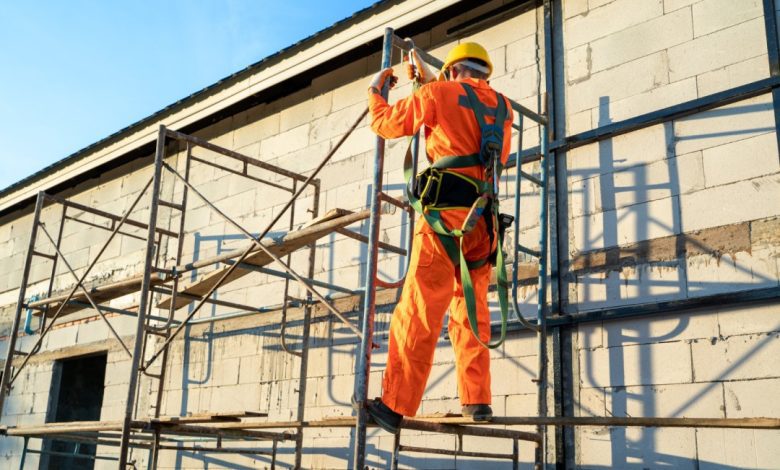Enhancing Safety at Construction Sites with Scaffolding

Construction sites are dynamic environments where safety is paramount. Scaffolding, a temporary structure erected to support workers and materials during construction, plays a crucial role in enhancing safety across various aspects of construction projects. This article explores how scaffolding improves safety measures on construction sites, its key features, and the benefits it offers to workers and project managers alike.
Importance of Safety in Construction
Construction work is inherently risky due to working at heights, heavy machinery, and the presence of multiple trades working simultaneously. According to the Occupational Safety and Health Administration (OSHA), falls are among the leading causes of injury and death in the construction industry. Ensuring a safe working environment is not only a legal requirement but also essential for maintaining productivity and protecting workers’ well-being.
How Scaffolding Enhances Safety
1. Fall Prevention
Scaffolding provides elevated work platforms with guardrails and toe boards that help prevent falls from heights. By offering stable and secure platforms for workers to perform tasks, scaffolding significantly reduces the risk of accidents related to working at elevation.
2. Safe Access and Egress
Properly installed scaffolding systems provide safe access points for workers to reach different levels of the construction site. This eliminates the need for makeshift ladders or unstable structures, minimizing the risk of slips, trips, and falls during ascent and descent.
3. Platform Stability
Scaffolding platforms are designed to support heavy loads, including workers, tools, and materials. They are engineered to withstand the rigors of construction activities, providing a stable workspace that enhances productivity and safety.
4. Protection from Falling Objects
In addition to protecting workers from falls, scaffolding also prevents objects and materials from falling onto workers below. Toe boards and debris netting can be installed around scaffolding platforms to contain debris and ensure a safer working environment for everyone on site.
5. Facilitates Compliance with Safety Regulations
Scaffolding systems are designed and installed according to strict safety standards and regulations, such as those set by OSHA in the United States and similar regulatory bodies in other countries. Compliance with these standards helps construction companies avoid fines, penalties, and legal liabilities associated with workplace accidents.
Key Features of Safe Scaffolding Systems
1. Guardrails and Toe Boards
Standard scaffolding setups include guardrails along open sides and ends of platforms to prevent falls. Toe boards are installed at the edges of platforms to prevent tools and materials from accidentally falling off.
2. Non-slip Surfaces
Scaffolding platforms are equipped with non-slip surfaces or planking to provide secure footing for workers, especially in wet or adverse weather conditions.
3. Regular Inspections and Maintenance
Routine inspections and maintenance of scaffolding systems are essential to ensure their structural integrity and safe operation throughout the duration of the construction project.
4. Proper Assembly and Dismantling
Scaffolding should be erected and dismantled by trained professionals following manufacturer guidelines and safety protocols. Proper assembly ensures the stability and reliability of the structure during use.
Benefits of Scaffolding in Construction Safety
1. Reduction in Accidents and Injuries
By providing a secure working platform with guardrails and safety features, scaffolding significantly reduces the incidence of falls, slips, and other construction-related accidents.
2. Improved Efficiency and Productivity
Safe scaffolding systems allow workers to focus on their tasks without safety concerns, thereby enhancing overall productivity and project timelines.
3. Enhanced Worker Morale and Satisfaction
A safe working environment fosters higher morale among workers, leading to increased job satisfaction and retention within construction teams.
4. Legal Compliance and Liability Mitigation
Adhering to safety regulations and standards through proper scaffolding use helps construction companies mitigate legal risks, avoid fines, and uphold their reputation as responsible employers.
Conclusion
Scaffolding serves as a critical component in promoting safety at construction sites by providing stable platforms, fall prevention measures, and compliant working conditions for workers. Its role in enhancing safety cannot be overstated, as it addresses common hazards associated with construction work and ensures compliance with stringent safety regulations. By investing in safe scaffolding practices, construction companies prioritize the well-being of their workforce while simultaneously improving operational efficiency and project outcomes. As construction methods evolve and safety standards advance, scaffolding remains an indispensable tool in safeguarding the lives and livelihoods of workers across the construction industry worldwide.






